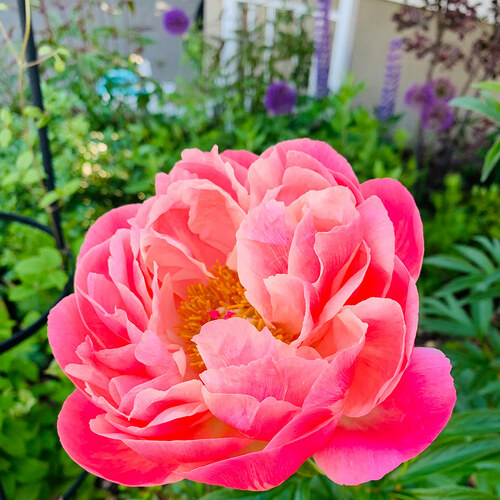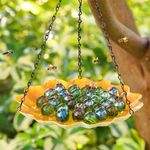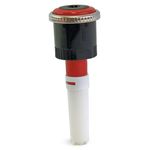
Hi GPODers!
We enjoyed some snow-filled scenes from Tingshu’s garden in Massachusetts yesterday, and today we’re staying in the state but turning back the clock to some beautiful blooms of summer. Joan Cogliano has shared some sensational summer flowers from her garden in the past (Painting a Garden With Flowers, Joan’s New Garden, Last Summer in Joan’s Garden), but it has been a while since we’ve gotten an update. Today we get a look at some of the gorgeous color and exquisite blooms that were on display last year.
Hi my name is Joan Cogliano and here are some pics from my North Weymouth, Massachusetts garden.
 First up, an Alchymist climbing rose (Rosa ‘Alchymist’, Zones 4–9) produced an abundance of fully double, old-fashioned blooms. But the seemingly endless ruffles of petals on these roses is only part of this glorious varietie’s attractiveness. We only get to admire their sensational color and form, but Joan gets to enjoy their strong fragrance.
First up, an Alchymist climbing rose (Rosa ‘Alchymist’, Zones 4–9) produced an abundance of fully double, old-fashioned blooms. But the seemingly endless ruffles of petals on these roses is only part of this glorious varietie’s attractiveness. We only get to admire their sensational color and form, but Joan gets to enjoy their strong fragrance.
 Roses mingle with sea of other sea of other colors, textures, and forms in Joan’s flowers beds. While there is a lot going on in this scene, a cohesive combination of pinks, purples, and orange ties everything together.
Roses mingle with sea of other sea of other colors, textures, and forms in Joan’s flowers beds. While there is a lot going on in this scene, a cohesive combination of pinks, purples, and orange ties everything together.
 Continuing with this color theme, a gloriously bright pink peony. The way Joan captured this bloom makes it look like it’s going to jump right out of my screen. Potentially the variety ‘Coral Charm’ (Paeonia ‘Coral Charm’, Zones 3–8) or something similar, I love the range of pinks that can be found on its petals.
Continuing with this color theme, a gloriously bright pink peony. The way Joan captured this bloom makes it look like it’s going to jump right out of my screen. Potentially the variety ‘Coral Charm’ (Paeonia ‘Coral Charm’, Zones 3–8) or something similar, I love the range of pinks that can be found on its petals.
 Joan also showcases that having a cohesive theme doesn’t mean you can’t branch out and add some more complimentary colors. In a garden full of pink, purple, and orange, yellow is an easy and smart color to add to the mix. Big yellow irises are the perfect contrast to spires of bright purple salvia.
Joan also showcases that having a cohesive theme doesn’t mean you can’t branch out and add some more complimentary colors. In a garden full of pink, purple, and orange, yellow is an easy and smart color to add to the mix. Big yellow irises are the perfect contrast to spires of bright purple salvia.
 I can tell that Joan is one of my favorite types of gardeners, those that create beauty for every passer-by to enjoy. As someone that has spent extended periods of time traveling, and many days walking down unfamiliar streets, very few things incite excitement more than plantings spilling out along a sidewalk. Shame goes out the window and the phone comes out to capture the stranger’s generous plantings. If I was wandering around North Weymouth and stumbled upon these gloriously bright and cheerful pink yarrow (Achillea millefolium, Zones 3–9), I absolutely would have paused for a closer look.
I can tell that Joan is one of my favorite types of gardeners, those that create beauty for every passer-by to enjoy. As someone that has spent extended periods of time traveling, and many days walking down unfamiliar streets, very few things incite excitement more than plantings spilling out along a sidewalk. Shame goes out the window and the phone comes out to capture the stranger’s generous plantings. If I was wandering around North Weymouth and stumbled upon these gloriously bright and cheerful pink yarrow (Achillea millefolium, Zones 3–9), I absolutely would have paused for a closer look.
 Lastly, a perfect creamsicle-colored rose just beginning to unfurl looks luminous in front of cool catmint (Nepeta spp. and cvs., Zones 3–9).
Lastly, a perfect creamsicle-colored rose just beginning to unfurl looks luminous in front of cool catmint (Nepeta spp. and cvs., Zones 3–9).
Thank you for sharing another year of highlights from your garden’s peak, Joan! Your beautiful blooms never disappoint and I hope we get treated to fabulous flowers from your garden again next year.
Have a garden you’d like to share?
Have photos to share? We’d love to see your garden, a particular collection of plants you love, or a wonderful garden you had the chance to visit!
To submit, send 5-10 photos to [email protected] along with some information about the plants in the pictures and where you took the photos. We’d love to hear where you are located, how long you’ve been gardening, successes you are proud of, failures you learned from, hopes for the future, favorite plants, or funny stories from your garden.
Have a mobile phone? Tag your photos on Facebook, Instagram or Twitter with #FineGardening!
Do you receive the GPOD by email yet? Sign up here.
Fine Gardening Recommended Products

Bee Watering Station with Vivid Flower Design
Fine Gardening receives a commission for items purchased through links on this site, including Amazon Associates and other affiliate advertising programs.
Thoughtful Combo: You will receive a bee feeder and 30 glass marbles. This thoughtful combo can provide clean water for the bees, you just need to put the marbles into the bee watering station, add water (note: the water level should not exceed the height of the marbles) and hang them in the right place. The round, colored marbles can provide a place for the bees to stand and prevent them from falling into the water, effectively keeping the bees safe. Fine Material: This exquisite bee bath is made of high quality iron material, smooth surface, rust and weather resistant, not easy to fade, sturdy and reliable. Bee cups for garden can well meet the drinking water needs of lovely bees, and it can also provide food for bees, such as sugar water, nectar, etc., attracting more bees to your outdoor area and making your garden full of vitality. Perfect Size: The butterfly watering station has an overall height of 13.4 inches, a bowl diameter of 9.4 inches, and a weight of 0.44 pounds. The bee cup serves the needs of the bees well without plunging them into dangerously deep water or taking up unnecessary space in your garden, and this compact and efficient design makes it a practical addition to any outdoor space. Elegant Design: Our bee watering cups are designed in unique flower shapes with vibrant and realistic colours to attract lovely bees to your garden and patio, bee feeders for outside are not only functional but can also be used as a landscaping element, their vibrant floral patterns enhance the beauty of your garden. Multicolored Decoration: Colorful bee water stations look like flowers in a garden, flower bed or pot and attract bees and butterflies. They can drink or bathe in bee feeders, which are highly decorative and practical.

Hunter Industries MP-1000-90 Hunter Nozzle
Fine Gardening receives a commission for items purchased through links on this site, including Amazon Associates and other affiliate advertising programs.
– 8′ to 15′ radius with an adjustable arc of 90° to 210°, radius can be reduced by up to 25% to fit landscape needs
– Double-pop technology flushes the nozzle during start-up and shutdown to prevent clogging
– Wind-resistant, multi-directional streams provide even coverage

Planting in a Post-Wild World: Designing Plant Communities for Resilient Landscapes
Fine Gardening receives a commission for items purchased through links on this site, including Amazon Associates and other affiliate advertising programs.
Featuring gorgeous photography and advice for landscapers, Planting in a Post-Wild World by Thomas Rainer and Claudia West is dedicated to the idea of a new nature—a hybrid of both the wild and the cultivated—that can nourish in our cities and suburbs.








